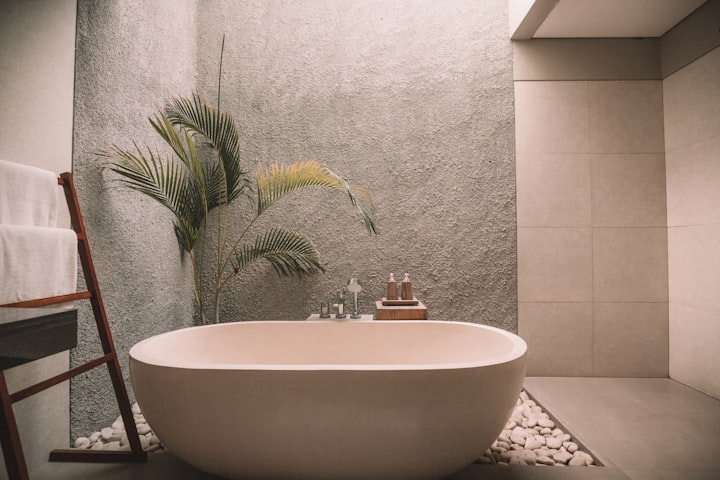Proper ventilation in the bathroom without windows
Tipps

Those who own a bathroom without windows will certainly know the problem: After showering, it takes quite a while for the moist air to escape from the room, the mirrors are fogged up and everything feels clammy and damp.
Unfortunately, mold spores also feel extremely at home when the humidity is too high, so walls, joints and tiles quickly become infested with mold. As a result, both the appearance of the bathroom and the health of the occupants suffer greatly.
Ideally, the humidity in a bathroom should be between 50 and 70 percent. To create this ideal value, it is recommended to use bathroom fans in windowless bathrooms.
The following article explains how ventilation with these works and what the advantages and disadvantages of bathroom fans are.
Passive bathroom ventilation
Especially in old buildings, passive ventilation can still often be found in interior bathrooms. There is a ventilation shaft, through the opening of which the air exchange is enabled. However, this in no way ensures sufficient circulation of the air.
In addition, therefore, at least one other measure should also be taken to dehumidify the air. Incidentally, the humidity in the bathroom can always be easily checked with a hygrometer. If the values are too high, appropriate measures should be taken.
Decentralized ventilation systems
A decentralized ventilation system is the most recommendable alternative to a window in the bathroom. The humid air is transported to the outside via this system and fresh outside air flows in. These ventilation systems are well suited for retrofitting, as they do not require exhaust pipes.
The bath ventilator is mounted on an exterior wall, the effort for this is kept within limits. All that is required is a wall opening or a core drill hole for the duct through which the air exchange takes place.
In the decentralized ventilation systems, there is a small fan that creates a negative pressure in the room through which the moist air is extracted. This air then goes outside through the exhaust duct. Fresh air flows into the bathroom from outside through the ventilation slots.
Heat recovery plays an important role in decentralized ventilation systems. Heat is extracted from the exhaust air by the ventilation system, which allows the incoming fresh air to be warmed up. This means that around 90 percent of the heat remains available, which is why there is no need to worry about higher heating costs.
Central ventilation system
In interior bathrooms, it is also possible to integrate a central ventilation system. This is connected either with an unoccupied pipe connection or a ventilation shaft, through which the exhaust air can reach the outside. However, with this system it is essential that sufficient fresh air can flow into the bathroom, for example via ventilation slots in the bathroom door.
In central exhaust air systems, the exhaust air is extracted by an integrated fan. This is then transported outside via the ventilation shaft or a pipe system. However, central ventilation systems only remove the exhaust air from the bathroom - fresh air does not automatically flow in.
For an indoor bathroom, the central exhaust air system forms a favorable solution, since no special supply air ducts and thus no costly structural measures are necessary. However, there is no heat recovery with this type of bathroom ventilation, which is why the energy efficiency of this solution is not particularly good. Tenants are only allowed to install ventilation systems with the consent of the landlord.
Alternative to ventilation systems
If there is no possibility to install one of the presented ventilation systems in the bathroom, other measures can also help to regulate the humidity in the bathroom.
For example, after showering or bathing, always open the bathroom door wide, as well as the windows in the adjacent rooms. If necessary, the apartment door can also be opened for a moment to allow the necessary air exchange. However, the doors to other rooms should be closed so that the moisture does not spread into them.
In order to rid the air of moisture, room dehumidifiers also prove helpful. These are available in both chemical and electric versions. The use of electric dehumidifiers is particularly efficient. The moisture absorbed from the air in the room is collected in an integrated tank. Chemical dehumidifiers, on the other hand, contain granules that remove excess water from the air.





Comments
There are no comments for this story
Be the first to respond and start the conversation.